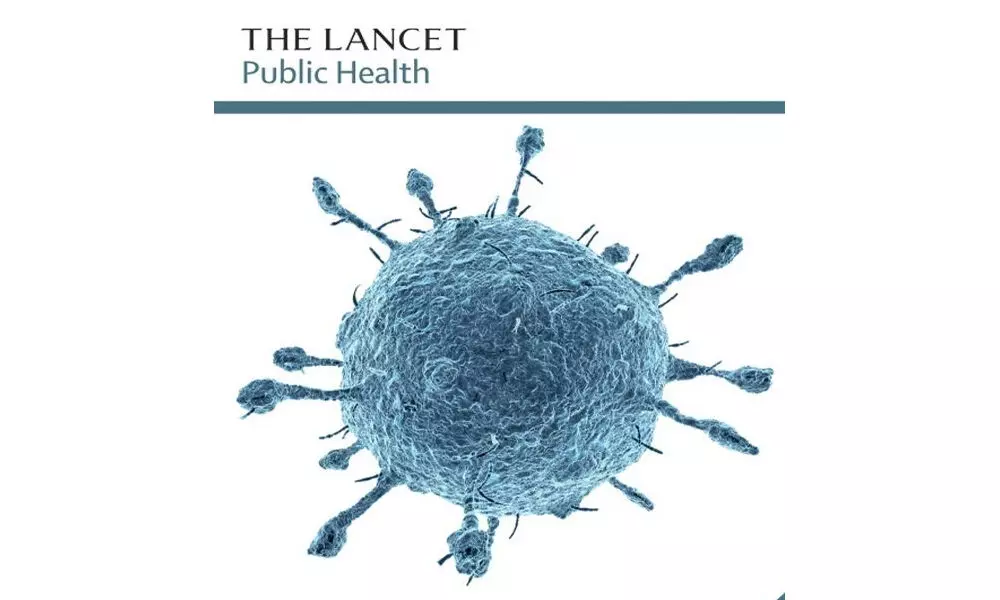Scientists sore over Lancet's attack
image for illustrative purpose

Mumbai THE scientific community of India is visibly peeved by the international medical journal The Lancet editorial that launched a scathing attack on PM Narendra Modi and his government on handling of Covid crisis in the country. In response to the editorial dated May 8 titled as 'India in Covid Emergency', the scientists as well as medical practitioners of India have raised red flag on social media against The Lancet.
It is not for the first time that Lancet has attacked Indian government. For example, it had attacked the country's government on the tackling of Kashmir crisis in its editorial, which was carried by the journal in August 17, 2019 edition ('Fear and uncertainty around Kashmir's future'). At one place, the journal's editorial says, 'The message that Covid-19 was essentially over also slowed the start of India's Covid-19 vaccination campaign, which has vaccinated less than 2 per cent of the population. At the federal level, India's vaccination plan soon fell apart.'
However, the facts are totally different. India started vaccination on January 16, 2021 and administered 18,44,53,149 doses till May 17. India has population of 1.30 billion, over 18 million vaccination (at least one dose) surely can't be 2 per cent.
Someone in your team should have known simple arithmetic, scientific community point out.
"There are two issues in The Lancet articles, which I felt was a bit unfair as far as journalism was concerned. First, this internationally reputed medical journal chose to single out the impact of the pandemic on India, while ignoring the fact that figures told the true story of Covid-19 devastation. Second, being a pure medical journal, it indulged into geo-politics and questioned India's Kashmir issue, which has nothing to do with science," said Science India editor, Debobrat Ghose said.
A strong rebuttal from India's scientific and medical communities was expected, after The Lancet published the said article, which in fact didn't happen. Rather, The Lancet piece was glorified by a section of the Indian media, as if it was an international certificate or endorsement against the Indian government, he added.
Casualties have been higher in percentages in countries possessing smaller populations, in numbers and/or density, than India, including the US, European nations and Brazil. In no case were the deceased so disrespectfully depicted as in our case. The reality in the US was that Covid casualties were buried in mass graves employing mechanical means and without permitting the next of kin to pay their last respects or be present. Human touch to those who lost the battle against Covid was missing.
A Pune-based renowned pharmacologist, Dr Ravindra Ghooi says, "In terms of new cases of Covid, last year the country had seen the reporting of maximum 1 lakh cases per day, which went up to 4 lakh in May this year. Any country which witnesses the increase in new cases four times per day can't cope up with it."
Prof Prabhat Ranjan, a nuclear fusion scientist who is currently working as Vice Chancellor of DY Patil International University in Pune, had started Covid data analysis sometime in April 2020 mainly for his own understanding of trends.
Talking to Bizz Buzz, he said, "I found lot of negative reporting in media that was leading to depression and hopelessness among people. I started sharing my analysis in social media to give hope to people based on factual analysis of trend. Slowly I also developed a method of predicting number of active cases in India that seemed to be very accurate over 3-4 weeks."
For many, Prof Ranjan's postings became a source of hope among the saddening news coming from all over. On April 27, 2021, he had predicted that active cases would peak on May 10. This came out to be true and predicted peak value was 98.5 per cent accurate. For more than one month his predicted values were accurate to more than 95 per cent.
"When I compare India's situation to that of other countries, based on available data, India ranks 108 among loss of life per million of population. India's recovery rate among closed cases, has been 98.7 per cent," he says.
In the second wave, India saw an exponential rise of cases that put huge burden on healthcare infrastructure. In two months' time, India saw a jump of 20 times in new cases. If we compare this to USA, they saw a jump of 7 times over 4 months. India has seen rapid drop also and in the first week of July, we should be seeing less than 2 lakh active cases – similar to those prevailing before rise of second wave. However, for any possibilities of next waves, India needs to be better prepared, he added.
For this, Prof Ranjan has suggested a few steps to be undertaken.
First, large scale skilling of persons needed to operate and maintain huge number of medical equipment received/manufactured in the country.
Secondly, creation of buffer stock of spare parts and consumables for such equipment.
Thirdly, training of a large group of volunteers for home care (such as NSS and NCC), he said.
Pinching Points
- Journal chose to single out the impact of the pandemic on India
- It says: At the federal level, India's vaccination plan fell apart. However, the facts are totally different
- It indulged into geo-politics and questioned India's Kashmir issue, which has nothing to do with science

